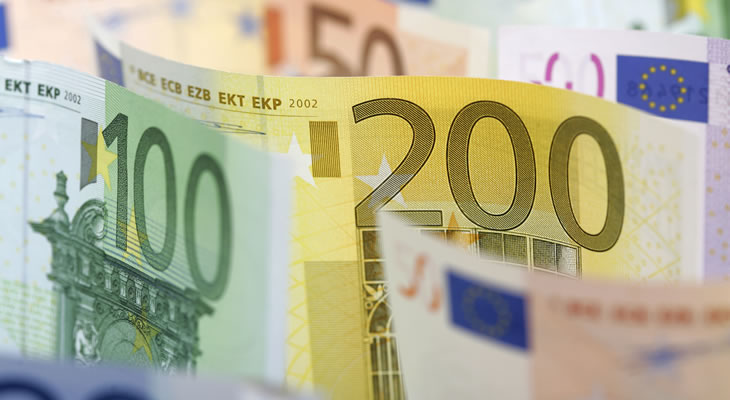Euro US Dollar (EUR/USD) Exchange Rate Weakens as Eurozone PMI Hits Four-Year Low
December’s finalised raft of Eurozone PMIs left investors with little incentive to favour the Euro (EUR) as the economy continued to show signs of a slowdown.
As the composite PMI was revised down to 51.1, from an initial reading of 51.3, the index sunk to its lowest level in more than four years.
With growth across the Eurozone stalling the mood towards the single currency naturally soured.
Chris Williamson, Chief Business Economist at IHS Markit, commented:
‘The data are consistent with Eurozone GDP rising by just under 0.3% in the fourth quarter, but with quarterly growth momentum slowing to 0.15% in December.’
Coupled with an unexpectedly sharp dip in December’s Eurozone consumer price index data this left the Euro to US Dollar (EUR/USD) exchange rate on a weaker footing.
As inflationary pressure eased to 1.6% on the year, falling well below the European Central Bank’s (ECB) 2% target, this further undermined the odds of interest rates rising in the near future.
US Dollar (USD) Exchange Rates Struggle to Shake Off Underwhelming Manufacturing Data
The mood towards the US Dollar (USD), however, remained muted in the wake of Thursday’s disappointing ISM manufacturing index.
As the Trump administration’s protectionism and slowing global growth put increasing pressure on the US manufacturing sector the appeal of the US Dollar diminished.
A general sense of market risk appetite also weighed on USD exchange rates ahead of the weekend as investors reacted to a better-than-expected showing from the Chinese service sector.
Even so, the US Dollar could still find a rallying point on the back of December’s non-farm payrolls report.
Evidence of the continued tightness of the US labour market could drive the EUR/USD exchange rate into a fresh slump ahead of the weekend.
However, if average hourly earnings data points towards a weaker level of wage growth in the final month of 2018 this may increase the odds of the Federal Reserve leaving interest rates on hold for longer.
Softer German Trade Data to Dent Euro (EUR) Exchange Rates
German trade data could put the EUR/USD exchange under greater pressure in the near future if the Eurozone’s powerhouse economy demonstrates further signs of weakness.
Any narrowing of the German trade surplus is likely to weigh on the single currency, especially as signs also point towards weaker domestic demand for German goods.
Signs that the wider global slowdown is continuing to drag on the German economy may give investors incentive to pile out of the Euro next week.
Another weak month of export volumes could put particular pressure on EUR exchange rates, with the global economy looking set to slow further in the months ahead.
If trade conditions show signs of improvement, on the other hand, this may encourage the Euro to recover lost ground.


Comments are closed.